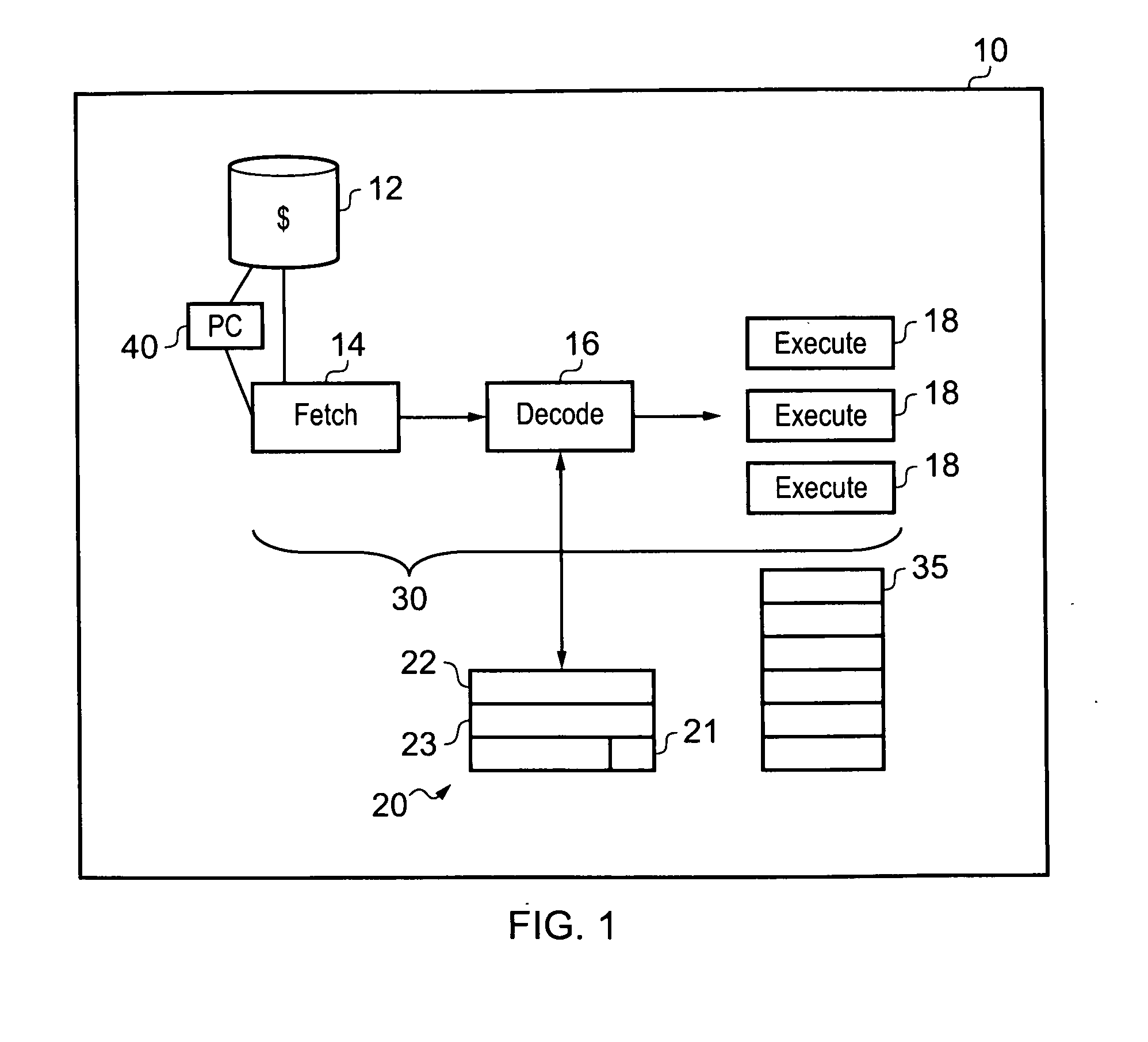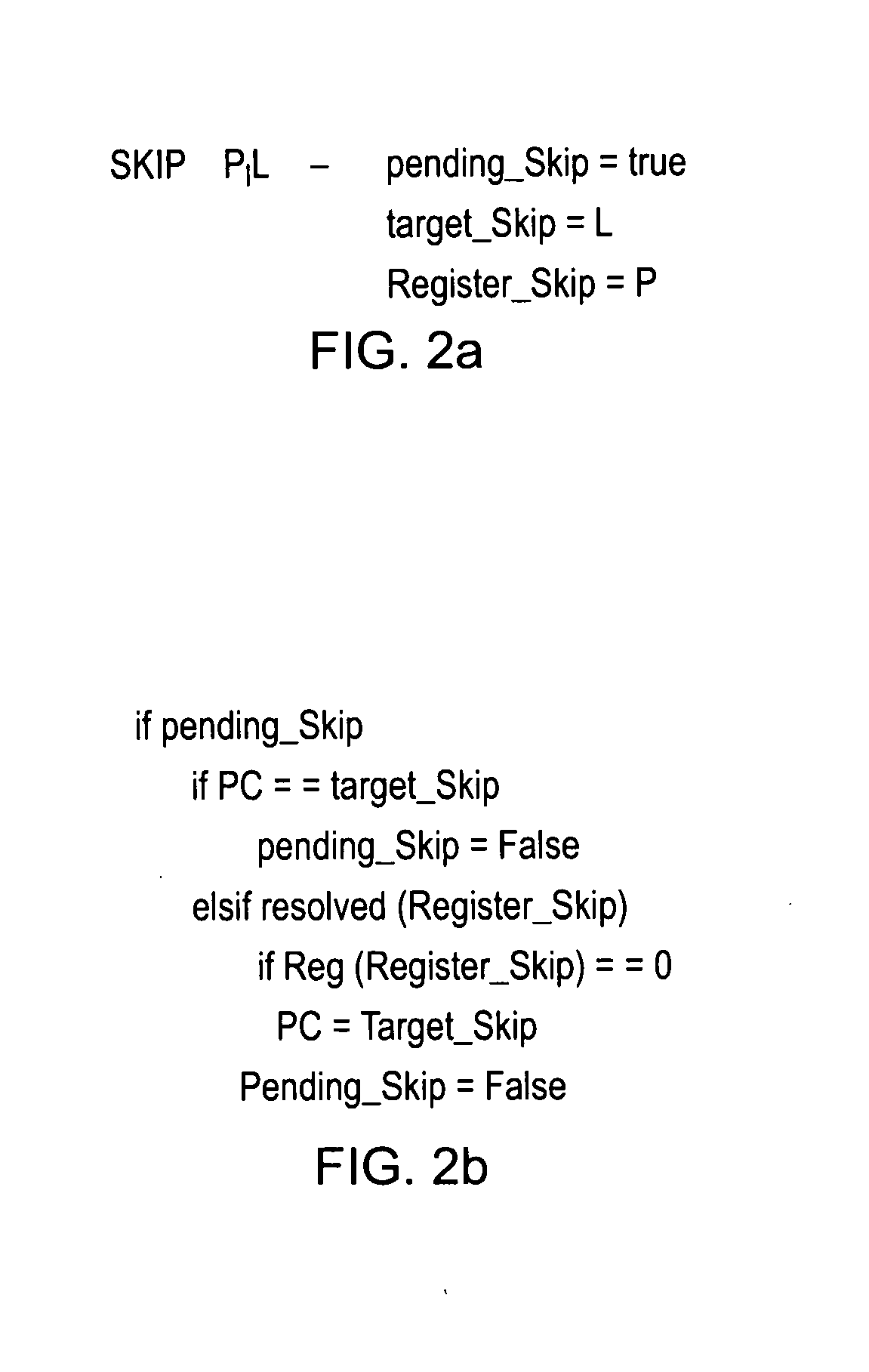Controlling the execution of adjacent instructions that are dependent upon a same data condition
a technology of data condition and control, applied in the field of data processing apparatus, can solve the problems of high cost of machine at a certain point, difficult prediction of data dependent branches, etc., and achieve the effect of improving the performance of the processor processing such instructions
- Summary
- Abstract
- Description
- Claims
- Application Information
AI Technical Summary
Benefits of technology
Problems solved by technology
Method used
Image
Examples
Embodiment Construction
[0057]FIG. 1 shows a data processing apparatus 10 for processing an instruction stream according to an embodiment of the present invention. Data processing apparatus 10 has an instruction cache 12 for storing instructions to be processed. These instructions are fetched by fetch unit 14 in dependence upon the value in program counter 40. The fetched instructions are sent to instruction decoder 16 for decoding and are then executed by one of the parallel execution pipelines 18. The fetch unit, decode unit and execution pipelines form processing circuitry 30 for processing the instructions. There is also a data store 20 that comprises registers holding control values controlling the execution of the instructions and a further data store 35 comprising registers for storing data values that are processed by the instructions executing. It should be noted that data store 20 and data store 35 may in some embodiments form a single register bank.
[0058]In an embodiment of the present invention...
PUM
 Login to View More
Login to View More Abstract
Description
Claims
Application Information
 Login to View More
Login to View More - R&D
- Intellectual Property
- Life Sciences
- Materials
- Tech Scout
- Unparalleled Data Quality
- Higher Quality Content
- 60% Fewer Hallucinations
Browse by: Latest US Patents, China's latest patents, Technical Efficacy Thesaurus, Application Domain, Technology Topic, Popular Technical Reports.
© 2025 PatSnap. All rights reserved.Legal|Privacy policy|Modern Slavery Act Transparency Statement|Sitemap|About US| Contact US: help@patsnap.com



